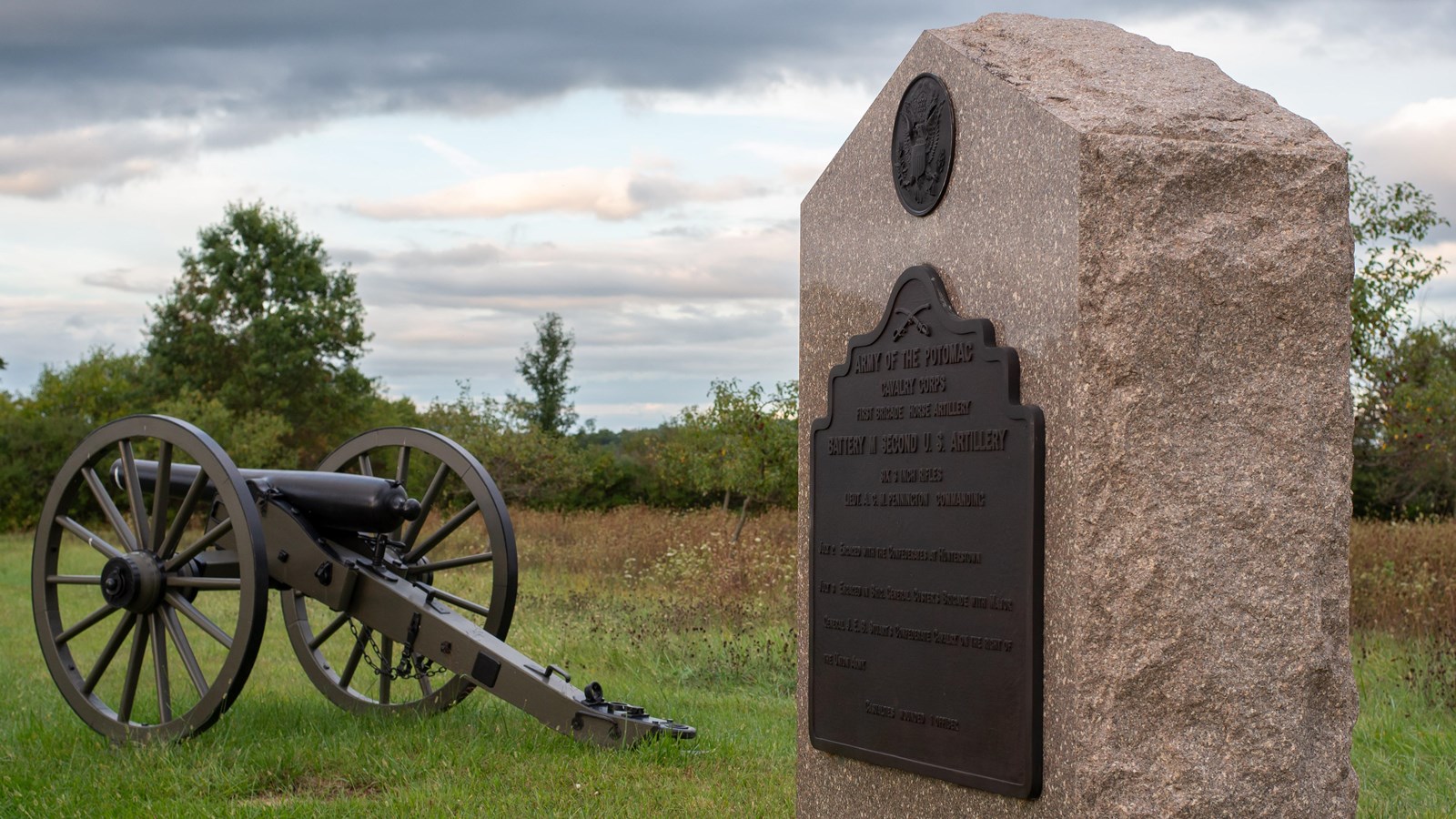Last updated: September 27, 2022
Place
Battery M, 2nd US Artillery Marker

NPS Photo
Parking - Auto, Parking - Bus/RV
"If you want to see a good time, 'jine the cavalry!"
The role of the cavalry at the beginning of the Civil War was very limited. The cavalry of both armies were employed for patrolling and scouting, guarding supply trains and railroads, and providing escorts to generals. They were only used in battle as shock troops, a tactic dating back to the Romans. A favorite jibe from the infantry was “Did you ever see a dead cavalryman?” The foot soldiers believed the cavalry to be “dandies on horseback” who never saw much fighting and always had the easy life. Certainly, the dash and spirit of the more flamboyant cavalry leaders provided the newspapers with many stories of harrowing rides and gallant duels in the saddle.
Confederate troopers commanded by Major General J.E.B. Stuart had the grandest reputations of all cavalrymen: ready to ride on a raid at a moment’s notice or rush to the front to do battle just as the tide was beginning to turn. Of course, truth was very different from the romantic descriptions of newspapermen. Soldiering on horseback was a hard life with plenty of danger. The cavalry’s military role had dramatically changed by 1863 and the armies were making use of their horse soldiers in combat situations. Commanders utilized cavalry as advance scouts and as a mobile fighting force. These new strategies culminated in the largest cavalry battle of the war fought on June 9, 1863 at Brandy Station, Virginia.
Brandy Station was the opening clash of the Gettysburg Campaign.
Federal troopers of Brig. Gen. John Buford’s First Cavalry Division opened the Battle of Gettysburg against Confederate infantry of Maj. Gen. Henry Heth’s Division on July 1. The cavalrymen were limited by their numbers and the moderate range of the carbines they carried, but were able to delay the Confederate advance for two hours until Federal infantry arrived. While the armies did battle around Gettysburg, cavalry units skirmished in Hunterstown, Pennsylvania, and on several roads east of town.
Confederate cavalrymen traveled lighter than their Union counterparts and were not usually armed with the more modern carbines. Short, muzzle-loading carbines were more common in Confederate regiments, including imports from England. Some Confederate troopers preferred to leave their sabers behind and carried extra pistols instead of sabers, for close work. Confederate arsenals attempted to mass-produce breech loading carbines, even making copies of Union carbines made by the Sharps Rifle Company. Attempts at mass production of the weapon failed and Confederate cavalrymen relied upon a varied stock of captured and imported arms.
On July 3, 1863, in an effort to protect the Confederate left flank, Confederate Maj. Gen. J.E.B. Stuart led his Cavalry troops from near Hunterstown to a position near the York Road. The area today known as East Cavalry Field.
On the morning of July 3, this ground was occupied by a brigade of four Michigan regiments and a battery of horse artillery under the command of newly promoted Brig. Gen. George A. Custer. After a battle at Hunterstown the previous evening, Custer had been ordered to this position to protectthe right flank of the Union army at Gettysburg and secure the important intersection of the Low Dutch and Hanover Roads just off to your right. Custer’s four regiments were soon reinforced by the arrival of Brig. Gen. David M. Gregg’s Second Cavalry Division, which took position on Custer’s left along the Hanover Road.
Around noon, Gregg received word from Maj. Gen. George G. Meade that Stuart was moving towards the Union right flank with a large force of cavalry with the intention of attacking the rear of the army.
At the same time, Custer received an order directing him to rejoin his division (Third Cavalry Division) on the Union left near the Round Tops.
With this vital intersection being vacated by Custer, Gregg moved Col. John B. McIntosh’s four regiments forward to occupy the crossroads. McIntosh soon ordered the 1st NJ Cavalry Regiment and the 3rd PA Cavalry to a wooded area around the Lott Farm, the white barn about one-half mile to your front, to watch for Stuart’s arrival. It was about 1 pm.
